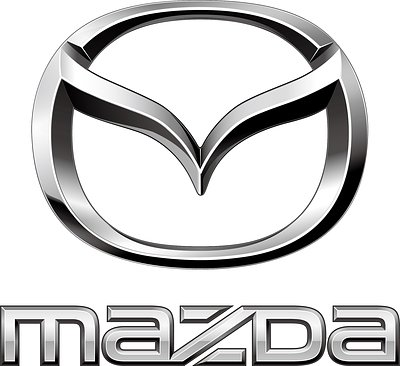
Mazda Bets on AI & Carbon Capture for a Sustainable Future – But Challenges Remain
Mazda unveiled ambitious vision models featuring AI-powered driving and a novel carbon capture system. But experts question the feasibility of these technologies amidst a rapidly evolving automotive landscape.
Mazda Bets on AI & Carbon Capture for a Sustainable Future – But Challenges Remain
Tokyo, Japan – Mazda Motor Corporation showcased its vision for the future of driving at a recent industry event, unveiling two concept models – the X-COMPACT and X-COUPE – that heavily emphasize artificial intelligence (AI) and a potentially groundbreaking onboard carbon capture system. While the company is doubling down on innovation, experts suggest that significant hurdles remain before these technologies can become a widespread reality.
A Human-Centric Approach to AI
The X-COMPACT, in particular, highlights Mazda’s commitment to a more “human-centric” driving experience. Unlike many automakers focusing on fully autonomous vehicles, Mazda is prioritizing AI integration that enhances driver comfort and personalization. The concept features an AI assistant designed to learn driver preferences and provide a tailored in-car experience, including natural language conversation and proactive assistance.
“We believe the future of driving isn’t about replacing the driver, but about augmenting their abilities and providing a more enjoyable and connected experience,” a Mazda spokesperson stated during the event. The company aims to create an AI that anticipates driver needs, from adjusting cabin settings to suggesting optimal routes.
However, Mazda isn’t alone in pursuing AI-powered driving experiences. Competitors like Toyota, Honda, BMW, and Mercedes-Benz are all investing heavily in similar technologies. While Mazda’s approach to natural language interaction and personalization stands out, it faces stiff competition in a rapidly evolving market. Industry analysts suggest that successful AI integration will depend on delivering truly useful and reliable features that drivers genuinely value.
The Ambitious Goal of Onboard Carbon Capture
Perhaps the most audacious element of Mazda’s vision is the integrated carbon capture system featured in the X-COUPE. The system, still in development, aims to capture CO2 emissions directly from the vehicle’s exhaust, reducing its overall carbon footprint. Mazda claims the technology could potentially capture up to 10% of the vehicle's CO2 emissions under optimal conditions.
“We see carbon capture as a vital component of our long-term sustainability strategy,” a company representative explained. “By capturing CO2 at the source, we can significantly reduce the environmental impact of driving.”
However, experts are skeptical about the practical feasibility of onboard carbon capture. “While the concept is intriguing, there are significant technological and economic challenges to overcome,” said one automotive engineer, speaking anonymously. “Capturing and storing CO2 requires energy and space, which could negate some of the environmental benefits. Furthermore, the cost of implementing such a system on a large scale could be prohibitive.”
Existing carbon capture technologies are primarily focused on industrial applications, like power plants and cement factories, not individual vehicles. The energy required to capture and store CO2, coupled with the weight and complexity of the system, raises questions about its practicality for widespread automotive adoption. Independent analysis of Mazda’s claims is needed to verify the technology’s real-world effectiveness and assess its long-term viability.
A Bold Gamble on a Sustainable Future
Mazda’s commitment to sustainability is evident in its investments in electric vehicles, hybrid systems, and now, AI and carbon capture. The company has set an ambitious goal of achieving carbon neutrality by 2035, and these technologies are seen as key components of that strategy.
However, Mazda faces significant financial risks in pursuing these ambitious goals. Transitioning to sustainable technologies requires substantial investment in research and development, as well as retooling manufacturing facilities. The company must also navigate a rapidly changing regulatory landscape and compete with larger automakers that have deeper pockets.
“Mazda is taking a bold gamble on the future of driving,” said one industry analyst. “They are betting that AI and carbon capture will play a crucial role in achieving a sustainable future. But whether that bet pays off remains to be seen.”
Despite the challenges, Mazda’s commitment to innovation and sustainability is commendable. The company’s vision for a more human-centric and environmentally friendly driving experience is a welcome departure from the industry’s focus on autonomous vehicles and electric vehicles alone.
As Mazda continues to develop these technologies, it will be crucial to address the technical and economic challenges, as well as to ensure that the benefits of AI and carbon capture are accessible to all. The company’s success will depend on its ability to deliver innovative solutions that are both environmentally responsible and economically viable.
Key Takeaways:
- Mazda unveiled vision models featuring AI-powered driving experiences and a novel onboard carbon capture system.
- Experts question the feasibility and cost-effectiveness of onboard carbon capture technology.
- Mazda faces significant financial risks in pursuing its ambitious sustainability goals.
- The company’s success will depend on its ability to deliver innovative solutions that are both environmentally responsible and economically viable.
